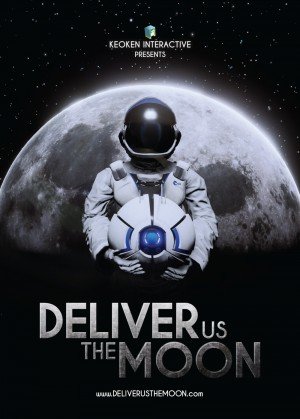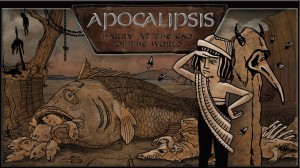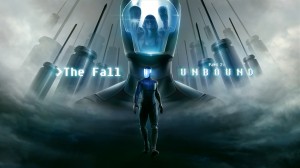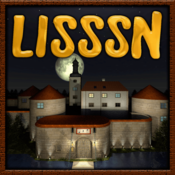Deliver Us the Moon: Fortuna archived preview
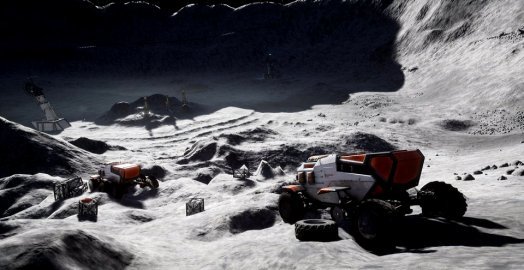
The year is 2059, and things are not looking good for Earth. 2030 saw the great energy crisis, and as a result the World Space Agency (WSA) was formed to find a new energy source. It turned out the vast reserves of Helium 3 found on the moon could be used to solve the problem, so in 2032 a lunar colony was formed to mine this invaluable resource. But two decades later the energy transfer mysteriously stopped and communication with the moon was lost, putting the planet in a dire situation. The next year the WSA was shut down permanently, but a small group of ex-employees worked in secret to mount a mission to send an astronaut to find out what went wrong. You are that astronaut in KeokeN’s Deliver Us the Moon: Fortuna, a stunning-looking 3D sci-fi adventure in which you will blast your way into space and then traverse the moon’s surface and its various man-made stations to investigate what went wrong – an investigation that, suddenly, unexpectedly, ends before being resolved… at least for now.
As the anonymous, generally unseen hero charged with this daunting task, there is no explanation of who you are or how you got here, but clues found at the beginning suggest you have been training for this mission for some time. You begin at the Fesenkov launch site in a desert location with a sand storm approaching. Once you don your spacesuit, you will be in radio contact with Claire Johanson, who is the lead scientist at Mission Control. She will help you as much as she can throughout your journey.
Your first task is to launch the rocket before the storm destroys the facility. Here you are introduced to the controls and interface via a series of on-screen prompts. The majority of the game is played using the keyboard to guide your character and interact with items, while the mouse is used to pan the camera and determine your direction of movement. The mouse can also be used to scan highlighted items as you progress through later locations. The Tab key brings up the “Dossier” display that includes a database to keep track of your discoveries, a mission log serving as your task list (and also recording important passcodes as you find them), and a tools tab that lets you know what spacesuit equipment you have at your disposal at any given time.
Along with the rocket itself, you will eventually get to explore a number of interesting settings, including the Pearson Space Station (where you will need to navigate in a weightless environment), the Copernicus Moon base, Huygen’s Research Facility, and Reinhold Station. Each of these locations is gorgeously rendered with excellent 3D graphics, animations, and attention to detail. Everywhere you look are signs of the missing colonists, such as a chessboard, hand-written notes and personal effects (books, letters, children’s drawings, etc.). The cozy, lived-in scenes stand in stark contrast to the more barren, empty places you visit. Additional touches like safety posters, storage containers, crates, lockers and other items further add to the realism of the experience.
Of particular note is the animation during the rocket launch, where you can see the gantry pulling away and almost feel the G-force acceleration as you look down at the receding launch pad. Also impressive is the physics engine used for the zero-gravity areas in the space station. As you maneuver through floating objects, they realistically react to you contacting and moving them around, although this can lead to some disorientation as you try to find your way. Add in excellent sound effects, such as the sand storm brewing in the desert, the roar of the rocket launch, and the squealing of brakes on a lunar monorail (the list goes on), you feel as if you are really there. The background music contributes to immersion as well, suitably soothing or ominous as required, and looping occasionally in each setting.
In order to reach these locales you must, of course, solve puzzles and overcome obstacles along the way. While traditional adventure game challenges are involved, such as finding codes to locked doors, figuring out the correct sequence of controls to launch the rocket, finding parts to assemble an important mechanical companion, and manipulating a few inventory items, the majority of puzzles consist of timed events (where you can die) and environmental tasks in which you must use the keyboard to navigate and avoid trouble.
I think most adventure gamers can appreciate a few timed events – after all, they instill a sense of urgency and can add to the tension and fun – but in this case I counted no less than ten! Largely based on trial and error, some of them are pretty straightforward and you will likely succeed the first time through, but several are tough and you will most likely be killed numerous times before you figure out what to do. If you die you are usually restored to the point where you made your mistake, but in particular instances you need to start the level over from scratch, which can be quite frustrating. A good example is when you need to restore life support to the Pearson Space Station. You have a limited supply of oxygen but you can collect additional O2 canisters to extend your time. This is a complex problem to fix, however, and no matter how much oxygen you collect you will almost certainly need to replay this sequence several times before resolving the issue.
Fortunately there are a few creative puzzles as well, especially those involving your ASE (All-Seeing-Eye), a floating robotic AI unit. Once active, you can use the ASE to access areas you can’t via remote control to do things like open locked doors, disable security systems, and activate power grids. While it is usually obvious when to use the ASE, the puzzles themselves require more thought to solve. Don't be surprised to become very attached to it as the game progresses, much like the Companion Cube in Portal.
In terms of character and plot development, Deliver Us the Moon really shines. While you never actually meet anyone else, the colonists are fleshed out through an exposition system in your Dossier and virtual recordings left behind. As you explore, you will see active voice waveforms that you can listen to when you pass through them. These are logged in your database under the appropriate headings. Each heading in your Dossier has a found/total number so you know if you have missed something that might be useful in your investigation. You will also encounter hologram recordings made by one of the crew’s ASE units during the crisis that befell them. These sequences are very stylized, using just coloured silhouettes instead of real people, to excellent effect. Like the audio waves, they are location-based so you need to explore thoroughly to find them all. When you watch a hologram, it too is automatically added to your Dossier.
In both cases the voice acting is well done, and you can really relate to these people and what they experienced. The main character in the audio recordings is Engineer Sarah Baker. Her log entries indicate she was the last person trying to get the bottom of the blackout, and this provides motivation to follow in her footsteps to discover her fate. There is also an intriguing audio entry when you first open the Dossier labelled “Encrypted transmission,” but you will need to collect more Dossier items to decipher the message. You soon discover that something sinister took place which resulted in the loss of power and communication, but you will also learn about the crew’s personal relationships that are quite touching and add a lot to the narrative.
An autosave system is used to keep track of your progress, which works well for the most part. In some cases, however, there can be a long period of time to repeat if you fail or quit and restore from the previous checkpoint. In particular, there are two back-to-back timed segments that can be quite challenging. Play time will vary according to how skilled you are on the keyboard. The average player will likely take 3-4 hours to complete the game, depending on how many times it takes to work through the timed events.
I really enjoyed the quieter moments playing Deliver Us the Moon: Fortuna, but at the same time was annoyed at the number of timed events and especially the abrupt ending before the story was complete. Although originally announced as a five-part episodic game on Kickstarter, the developers decided to release it as a standalone experience, and yet in its current incarnation the game is still not complete. Instead, this is just the first part of the story, with the rest promised as free DLC still to come. The problem is that nowhere on Steam does it state this is the case, and there has been strong reaction to this decision by the gaming community – and rightfully so. While I am looking forward to the next installment, and appreciate that it’s included in the original purchase price, the lack of release date and transparency in communicating the unfinished story up front leaves me feeling skeptical about its future. I'll withhold a final rating for the game until then, so let’s hope that we will see the conclusion to this interesting sci-fi adventure soon.



